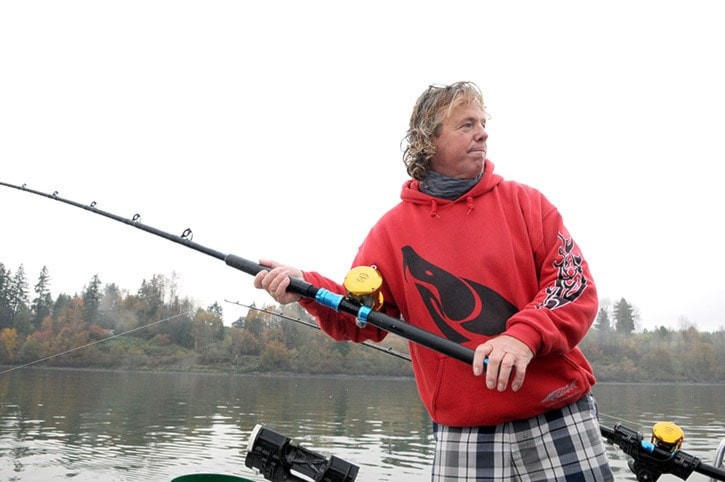Sport fishing leaders in the Chilliwack area have traditionally avoided "getting into the tackle box" of their fellow anglers.
But that may be changing.
"We want to continue to be given opportunities to fish salmon on the Fraser River — without interruption," said Dean Werk, president of the Fraser Valley Salmon Society, and owner of Great River Fishing Adventures guiding company.
In fact a "year-round" fishery for everyone to recreate on the mighty Fraser would be ideal, he said.
Venturing into the local angler's tackle box, FVSS reps plan to lobby government officials for specific leader-length restrictions, in order to avoid the fishing technique known as bottom-bouncing.
Members of the FVSS executive recently met with Chilliwack-Fraser Canyon MP Mark Strahl to see where he stood on the matter.
They say it's time to take action to reduce the impact on fish resources from bottom bouncing, which is considered a non-selective method of recreational fishing, and they want a leader length restriction imposed.
"Without a leader restriction, we think it will ultimately limit salmon fishing opportunities for the recreational fishing public," said Werk.
A shorter leader will mean fewer interceptions of the wrong kind of fish.
Sometimes called flossing, or snagging, bottom bouncing has grown exponentially on the Fraser, as well as on the Chilliwack-Vedder system, as a fast and easy way for neophytes to get out on the river and fish, without requiring any particular skill or experience.
The local MP told The Progress that they had a good initial discussion about the topic.
“I had a productive meeting with members of the Fraser Valley Salmon Society, where they voiced their concerns about the length of leader that some anglers are using to fish for salmon," said Strahl.
The MP has pledged to keep the discussion going.
"I’ll be taking their concerns to officials at Fisheries and Oceans Canada, and we committed to having an open and ongoing dialogue about the society’s efforts to promote the interests of sports fishermen and salmon conservation.”
The sport fishing industry is worth an estimated $100 million in the Fraser Valley, especially in terms of local spinoffs to service and retail outlets, Werk said.
"We have become the number one sport fishing destination in the world," he said.
An economic impact survey from 2005 on the the value of the sturgeon fishing industry in the Chilliwack area, pegged it at $11 million. Werk believes it could easily be double that figure by now.
So encouraging DFO to establish a set sockeye harvest season every year would be an effective way to establish the year-round fishery that FVSS is advocating, says Werk.
The perfect sockeye window would be between Aug. 15 and Aug. 30 every summer, he said.
That kind of schedule and certainty would allow the industry, and individuals to fit everything into an intense period that opened and closed on the river quickly.
"But the season would open if, and only if, the stocks allowed," he said.
Concern has been growing in the community about impacts of BB on conservation efforts with reports of unwanted, incidental by-catch of certain species. But it's still controversial and some anglers balk at the prospect of being told how to fish.
However, Fisheries and Oceans Canada formally asked Fraser River anglers to stop bottom bouncing with a fishery notice issued in August 2009. The stated goal of the unusual request was specifically to avoid sockeye encounters. The DFO notice went out a time when sockeye returns were crashing at unprecedented levels, and river temperatures were very high. The Cohen commission was formed as a result of the dismal 2009 sockeye returns.
Bottom bouncing involves casting with an extra-long leader line, sometimes 12 to 15 feet long, in order to have the bait and lead weight called a "bouncing Betty" boune along the river bottom, until a fish is hooked.
It's called snagging by some since the sockeye are not technically jumping at the bait when they're heading to spawning grounds in late summer. So there's some criticism that it's not sportsmanlike, and that short-floating or using shorter leaders, would keep the unwanted by-catch of the species to a minimum.
Fly fishing, float fishing, or bar fishing are fishing methods considered to be less harmful than BB, selective fishing.
Because the recreational angler retains less than two per cent of annual stocks travelling up the Fraser river, that should allow them a chance to stay longer in the river to fish, Werk argued.
More at www.fraservalleysalmonsociety.ca or on their Facebook page.
